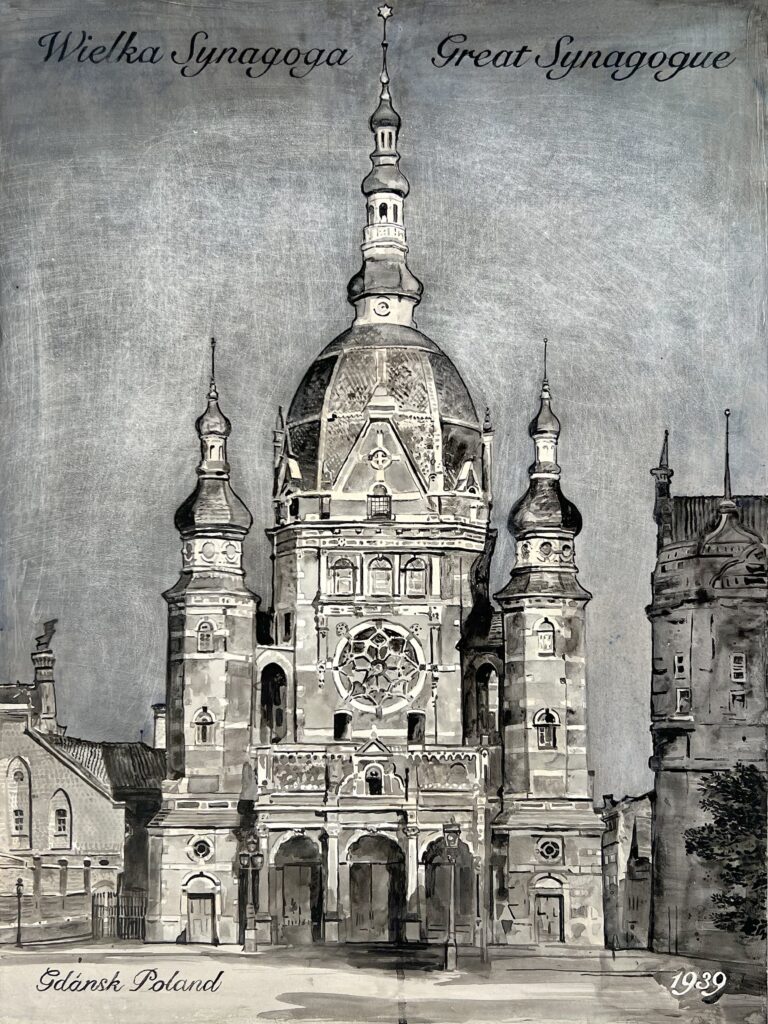Gdansk, Poland
Demolished 1939

Jews were first permitted to live in Danzig (now Gdansk) in 1773 after the city came under Prussian rule. They achieved full legal equality in 1869 along with the rest of Prussian Jews. The Arab-Byzantine-style Great Synagogue was built in 1887 for the newly unified Jewish community, which was primarily liberal in tone; the Orthodox Mattenbuden Synagogue was retained for the Eastern European minority. The community in Danzig remained relatively small, under 3% of the city population, until the establishment of the Free City of Danzig after World War I. As a city under international protection and a free port without visa restrictions, the Danzig community became a favored destination for Jewish refugees from Russia and Poland attempting to emigrate to the United States or Canada, with the result that the community quadrupled in size. However, as more and more Nazis were elected to the government, life for the Jewish community became increasingly precarious. On Kristallnacht, stormtroopers destroyed synagogues in Zoppot (now Sopot) and Langfuhr; the Great Synagogue was saved by Jewish war veterans who kept guard throughout the night with the assistance of local police.
In early 1939, the increasingly desperate Danzig Jewish community negotiated the sale of Jewish property, including the synagogue and the cemetery, in order to finance its emigration. It was decided that the contents of the synagogue, which included the priceless collection of Lesser Gieldzinski, art advisor to Kaiser Wilhelm II, should be sent to the United States for safekeeping. The American Joint Jewish Distribution Committee paid for the collection and ten huge crates, weighing over 2 tons were subsequently delivered to The Jewish Theological Seminary of America in New York City one month before the German Army marched into Danzig. The proceeds from the sale of property and the donation was used to facilitate the emigration of the approximately 6,000 Jews who remained in Danzig. The community decided that Polish Jews would leave for Poland, the rest would go wherever they could get visas, with the remainder attempting to illegally emigrate to Palestine. Sadly, the only Danzig Jews who were allowed to stay in Palestine were the survivors of the Patria, a ship that the British were using to deport illegal immigrants, which was blown up in Haifa harbor in 1940. Starting in early 1941, all remaining Jews in Danzig were deported to Polish ghettos and to Theriesenstadt for extermination.
The terms of the donation were that the collection would remain in New York for fifteen years and would be returned to Danzig only if the Jewish community was reestablished. The collection is now in the possession of the Jewish Museum in New York which mounted a exhibition of the collection in 1980, forty-one years after its donation. Much of this information comes from the essays by Joy Ungerleider-Mayerson and Gershon C. Bacon in the catalog of the exhibition: Danzig 1939: Treasures of a Destroyed Community, published by the Jewish Museum in 1980.
There is now a tiny bronze statue of the building on its former site but unlike much of the city, it has not been rebuilt. The painting is based on an old uncredited photograph.
Missing and not rebuilt. Anon